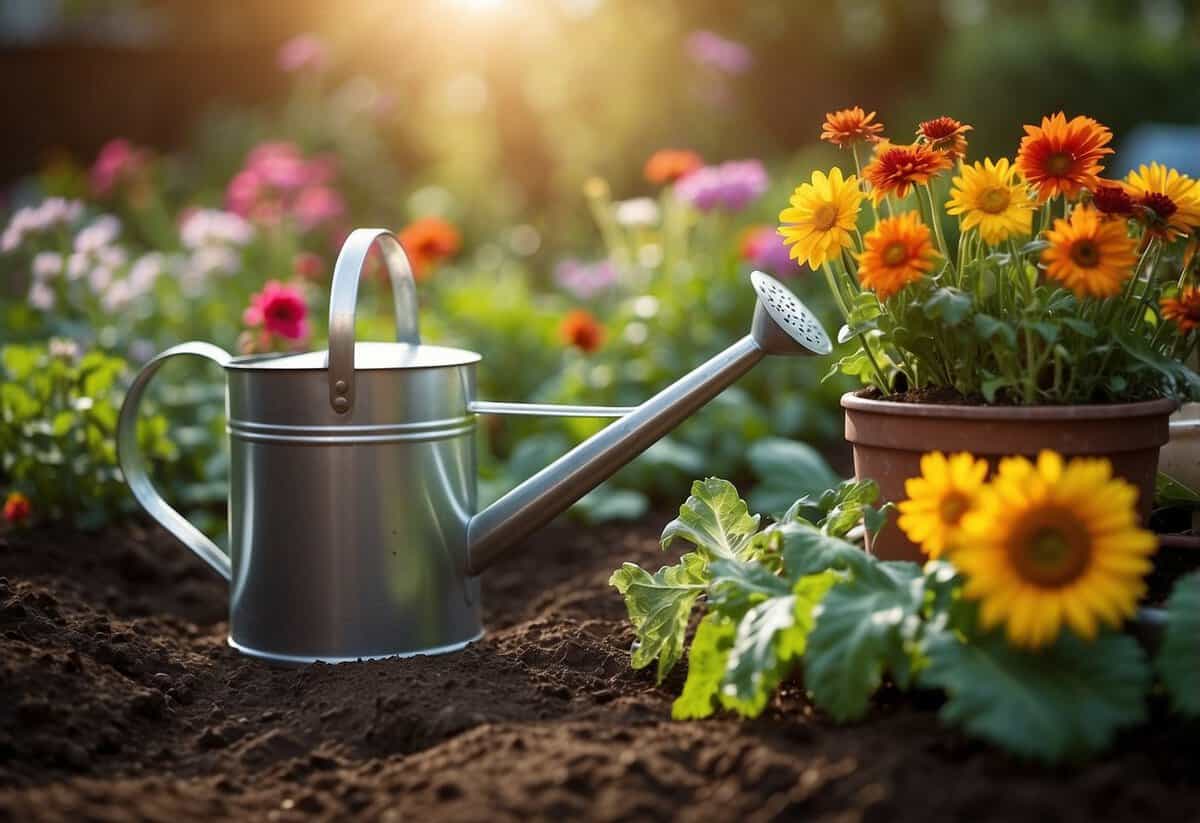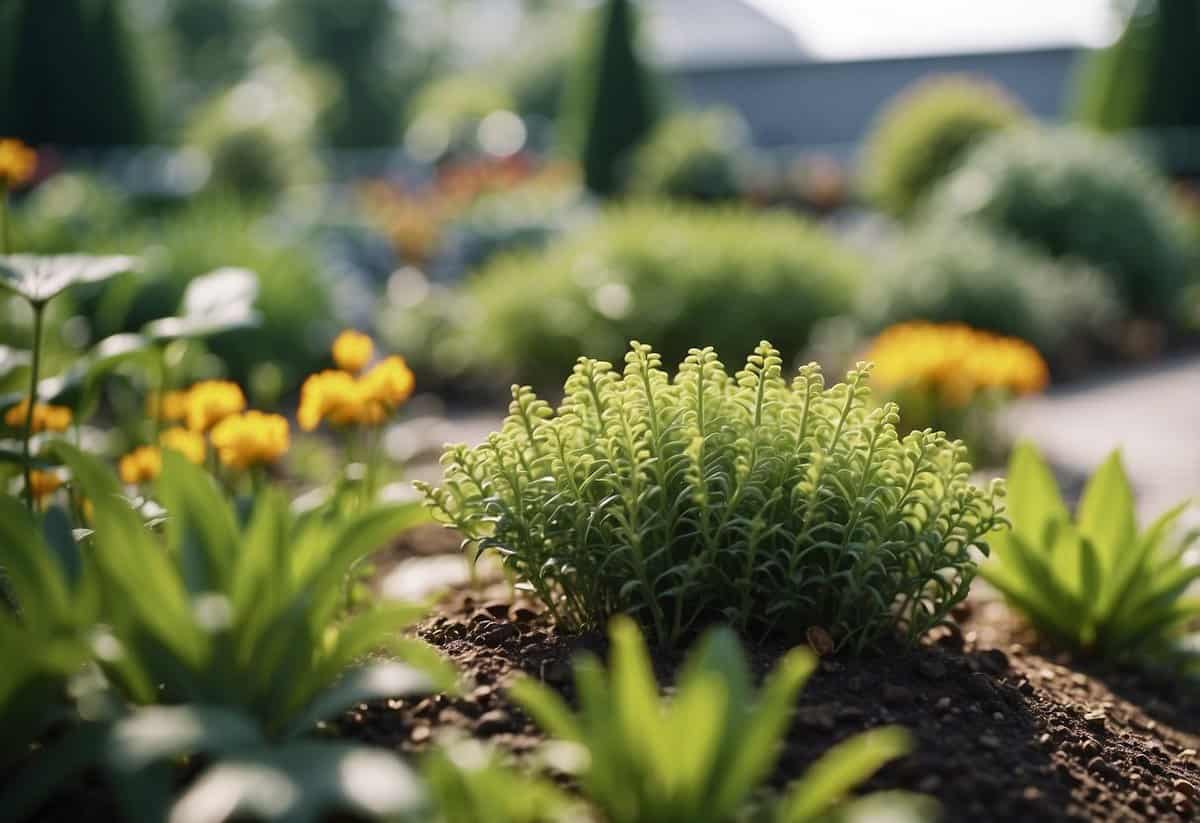Seasonal Gardening Tips: Easy Ways to Keep Your Garden Thriving
Gardening throughout the year can be both fun and rewarding, but it does require some planning. Each season brings its own set of tasks and challenges that are essential for maintaining a beautiful and productive garden. By understanding what your garden needs in each season, you can create a thriving outdoor space all year round.

Different plants and maintenance techniques are suited to different times of the year, making it important to adjust your efforts accordingly. Whether you’re a beginner or an experienced gardener, knowing the seasonal requirements of your garden can make your gardening journey more enjoyable and less stressful.
1) Plant Early-Blooming Bulbs in Fall

Planting early-blooming bulbs in the fall ensures a burst of color in your garden when spring arrives. Bulbs such as daffodils, crocuses, and tulips thrive when planted in the cooler autumn months.
Make sure to prepare the soil. Remove weeds, loosen the dirt, and add compost for nutrients. This creates an ideal environment for the bulbs to grow strong.
Choose a sunny spot for planting. Early spring flowers need plenty of sunlight to bloom beautifully. Follow the planting depth instructions on the bulb packaging for best results. Planting in the fall sets the stage for a vibrant spring garden.
2) Use mulch to retain soil moisture

Mulch is great for keeping your soil moist. By adding a layer of mulch, you help reduce water evaporation. This means less frequent watering.
You should aim for a mulch layer about 2 to 4 inches thick. This depth prevents water evaporation but still allows rain to reach the soil.
Mulch can also protect your soil from erosion and keep it looking neat. It regulates soil temperature, which is especially important in varying weather. This helps your plants grow strong and healthy. Learn more about mulching benefits and techniques to optimize your garden.
3) Prune dead branches in winter

Winter is the perfect time to prune dead branches. Trees and shrubs are dormant, which makes it easier to see what needs to be cut.
Start by removing dead, diseased, or broken branches. This helps the plant save energy and promotes healthy growth in the spring.
Be gentle and careful when pruning. Make clean cuts at the point where the branch meets another. This method helps prevent damage and encourages better healing.
For more detailed tips, visit winter pruning guides.
4) Start seedlings indoors in early spring

Starting your seedlings indoors gives them a head start before transferring to your garden. It’s best to begin about six weeks before the last frost date in your area.
Using an organic, soilless seed starting mix provides a healthy foundation. This mix is lighter than garden soil, which helps the seeds sprout.
Don’t forget to keep the soil damp, but not soaked. Providing enough light is essential; place the seedlings in a sunny spot or use grow lights.
Leaving seed starter tips blank at the end of a section to demonstrate word limit.
5) Rotate Crops Annually

Rotating your crops each year is vital for a healthy garden. When you plant the same crops in the same spot, it invites pests and diseases to thrive in that area. By changing the location of your vegetables, you break the cycle of pests and diseases.
Different plants use and replenish different nutrients in the soil. This helps to maintain soil fertility. You can read more about crop rotation in this vegetable garden guide.
Rotating crops is a simple way to ensure your garden remains productive year after year.
6) Plant cover crops in fall

Fall is the perfect season to plant cover crops. These crops protect and enrich your soil during the colder months.
Great options include oats, annual ryegrass, winter wheat, and clover. Each serves a different purpose, like preventing soil erosion or adding nutrients.
Plant these covers early in the season for the best results. Make sure to water them regularly to help them grow strong.
Try cover crops to keep your garden healthy through winter and ready for spring planting.
7) Use Compost to Enrich Soil

Compost is a fantastic way to boost your garden’s soil. By mixing it into your garden beds, you provide essential nutrients for your plants. You can do this in the spring or fall to help replenish the soil.
A simple method is top-dressing. Spread a thin layer of compost over the soil. This helps improve moisture retention and soil structure. For lawns, apply about 1/4 inch of fine compost.
Turning your compost pile every few weeks speeds up the process. Once it turns dark and crumbly, it’s ready to use. Choose a convenient, well-drained spot for your compost pile.
8) Choose Pest-Resistant Varieties

Selecting pest-resistant plants can save you a lot of trouble.
Flowers like marigolds, petunias, and zinnias are known to resist pests. They will keep your garden looking beautiful and healthy.
For perennials, consider planting coreopsis, yarrow, and coneflowers. These not only thrive but also fend off common garden pests effectively.
By choosing these varieties, you’ll spend less time battling bugs and more time enjoying your garden.
9) Harvest rainwater for irrigation

Collecting rainwater is a smart and eco-friendly way to water your garden. Use gutters and downspouts to funnel rain into barrels or tanks.
Rainwater harvesting helps you save water and reduce your water bill. It’s especially useful in areas with limited rainfall.
Make sure to filter the collected rainwater to keep it clean and safe for your plants. Regular maintenance of your system is also important.
10) Plant Native Species

Using native plants in your garden is a great idea. They are already adapted to your local climate and soil, so they need less water and care.
Native plants help local wildlife, such as bees and birds, find food and shelter. Removing invasive species and replacing them with natives can prevent monocultures and support biodiversity.
You can start by planting native perennials and grasses in the fall. Make sure to water them well and consider adding mulch to help retain moisture.
For more tips, check out this guide to native plant gardening.
The Importance of Seasonal Gardening

Gardening according to the seasons lets you harness the best growing conditions for different plants. It helps improve your garden’s health and productivity, while reducing the risk of pests and diseases.
Benefits of Seasonal Gardening
Seasonal gardening maximizes plant health and yields. By planting cool-season crops like lettuce or radishes in spring, you ensure they thrive without heat stress. Warm-season crops such as tomatoes and peppers do best in summer when temperatures and sunlight are high.
Adapting to the seasons also means timing your garden tasks properly. In fall, you can plant root vegetables like carrots and beets as they grow well in cooler weather. You can also use season extenders like cold frames to lengthen your growing period, providing fresh produce almost year-round.
Additionally, rotating crops each season helps maintain soil fertility. It prevents the depletion of specific nutrients and discourages pests and diseases that prefer certain plants. This results in a more balanced and sustainable garden.
Understanding Your Local Climate
Before planning your garden, it’s crucial to know your local climate. Knowing your area’s hardiness zone helps you choose plants that will thrive in your temperatures.
Different regions have varied growing seasons and frost dates. In cold climates, focus on plants that can withstand frost like kale and Brussels sprouts. In warmer areas, you might be able to grow all year round, but knowing when the hottest and coldest periods occur will still guide your planting schedule.
Monitoring local weather patterns also helps. Tools like weather apps can provide timely alerts for unexpected frost or heatwaves, allowing you to protect your garden proactively. By tailoring your gardening efforts to your climate, you create a thriving, resilient garden.
Preparing Your Garden for Different Seasons

Preparing your garden for each season requires different tasks to ensure it thrives year-round. You’ll need to know what actions to take during each season to keep your plants healthy and your garden looking great.
Spring Preparations
In spring, the ground starts to warm up, making it a good time to get your garden ready. Begin by clearing away any debris from the winter, such as fallen leaves and dead plants. You should also turn the soil and add compost or other organic matter to enrich it.
Check for any pests or diseases that might have emerged and treat them if needed. Start planting seeds or young plants that thrive in cooler temperatures, like peas, lettuce, and spinach. Prune any shrubs or trees that need it before they start new growth.
Consider adding mulch around your plants to help retain moisture and keep weeds down. Make sure your irrigation system is working properly so your plants get enough water as the weather warms up.
Summer Preparations
Summer can be challenging for gardens due to the heat and dryness. To prepare, make sure your plants are well-watered. Water deeply and less frequently to encourage deep root growth. Use mulch to keep the soil cool and moist.
Shade-loving plants should be placed in areas where they won’t be exposed to direct sunlight all day. Keep an eye out for pests that thrive in the heat and take steps to control them quickly.
Weeding is also important, as weeds can compete with your plants for water and nutrients. Consider planting heat-tolerant varieties like tomatoes, peppers, and eggplants. Deadhead flowers regularly to encourage new blooms and extend the flowering period.
Fall Preparations
Fall is a time to start winding down your garden and preparing it for the colder months. Begin by harvesting any remaining fruits and vegetables. Remove any dead or diseased plants to prevent issues in the next growing season.
Add a layer of compost to your soil to replenish nutrients. Plant cover crops like clover or rye to protect and enrich the soil over winter. Prune any perennials and divide if necessary to promote healthy growth in the spring.
Consider planting bulbs like tulips and daffodils for early spring flowers. Mulch around perennial plants to protect their roots from the cold. Clean and store your garden tools to keep them in good condition for the next season.
Winter Preparations
Winter is about protecting your garden from the cold. First, cover sensitive plants with frost cloths or bring potted plants inside. Make sure any irrigation systems are drained to prevent freezing.
Add a heavy layer of mulch around shrubs and perennials to insulate their roots. You can also use straw or leaves for additional protection. Check on any plants you have in storage every few weeks for signs of pests or disease.
Plant winter vegetables like kale and Brussels sprouts that can handle the cold. On warmer days, vent greenhouses or cold frames to provide good air circulation. Keep an eye on weather forecasts to prepare for any extreme cold snaps.







